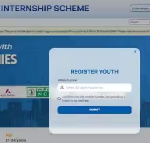Ride-hailing aggregator Uber on October 23, unveiled its 2024 India Economic Impact Report, compiled by consultancy firm Public First, which stated that its Moto and Uber Auto services are expected to support Rs 36,000 crore in economic activity in 2024.
“These services not only provide convenient options for commuters but also contribute to the overall growth of the economy by connecting people to jobs and opportunities,” Uber stated.
The report explains that Uber’s total economic impact is calculated by considering several factors, including drivers’ earnings from the Uber app, the indirect and induced supply chain impact of driver spending on vehicle purchase, maintenance, and insurance, as well as the additional spending by Uber riders in local businesses, driven by easier transport and the value of time saved using Uber.
Public First’s 2024 Driver Survey, which involved 1,167 Uber drivers, assessed their average spending on categories such as vehicle purchase, insurance, cleaning, and maintenance.
In 2023, Uber touched 1 million drivers using the platform in India. India became only the third country to achieve this threshold, after the US and Brazil. The report suggests the ride-hailing auto market could grow by 50 per cent over the next five years.
Key findings from the report include an estimate that Uber driver-partners earn an additional 60 per cent per year in income through Uber, compared to their next best employment alternative.
“Uber has also transformed urban mobility in India, with 84 per cent of users stating that the app has improved the quality of transportation. The report found that 70 per cent of riders find it easier to explore new restaurants and bars thanks to Uber, while drivers see about a 24 per cent boost in earnings compared to working without a platform. Furthermore, 65 per cent of Uber drivers believe they have more opportunities through the platform,” it said.
Safety emerged as a crucial factor for women riders, with 95 per cent citing safety as the top reason for using Uber. Additionally, 84 per cent of female riders believe Uber is the safest way to get home. In Delhi, 74 per cent of riders express a preference for electric vehicles (EVs), with 56 per cent willing to choose an EV option even at a higher cost. In Bengaluru, 93 per cent of riders consider time savings the primary reason for using Uber, with 80 per cent believing the service has improved travel speed.
Prabhjeet Singh, President of Uber India and South Asia, said, “We are committed to transforming the mobility landscape in India while driving economic growth. Our 2024 Economic Impact report highlights our role in supporting drivers, improving the travel experience of riders, and promoting sustainable options.”
One of the most important measures of economic welfare, according to Singh, is consumer surplus — the amount a consumer would be willing to pay for a service beyond its price. “Goods with a high consumer surplus play a crucial role in people’s lives,” he added.



